Carbon dioxide (CO2) is a natural part of the atmosphere and the basis of all life on our planet Earth. At the same time, large amounts of CO2, among other substances, are released when wood, coal, oil or gas is burnt.
Carbon dioxide is created both by the birds’ metabolism and by the barns’ heating systems. Well-insulated barns, an optimised ventilation concept and modern heating technology reduce the CO2 concentration of the indoor air as well as the amount of CO2 that is emitted into the environment.
Legal framework
The German Order on the Protection of Animals and the Keeping of Production Animals governs how much CO2 the indoor air may contain, defining a limit value of 3,000 ppm (*1 see below) for the concentration of CO2 per cubic metre of air. When this value is exceeded, the birds take deeper breaths and breathe faster, i.e. they inhale more harmful gases, dust and potential pathogens.
The birds’ risk of disease increases while their feed intake drops, making them “lazy.” For ideal production results, the CO2 concentration in the air should therefore be as low as possible.
The “DIN 18910” standard is one of the most important basics for planning heating and ventilation systems in Germany. It describes how much CO2 animals (poultry, pigs, cattle, horses) exhale per hour. It also considers emission factors with regard to the combustion of fossil fuels such as natural gas or propane.
The “carbon footprint” calculation method adds together all CO2 sources in the barn and offsets them to determine the minimum ventilation rate in the winter. This means that the more CO2 is created in the barn, the more often ventilation is required. More ventilation leads to increased heat loss and thus to higher heating costs. Another important indicator for air quality is humidity, which is closely connected with the air’s CO2 concentration.
Heating systems
When using direct fired heaters, the thermal energy of the burned gas and the hot flue gases flow into the barn together. For propane as a fuel, the flue gases amount to 150 g/h of water vapour and 230 g/h of CO2 for each kW of heat output. Even though the heaters have an efficiency of 100 %, the flue gases make increased ventilation in the barn necessary. Otherwise, the limit value of 3,000 ppm is exceeded too quickly.
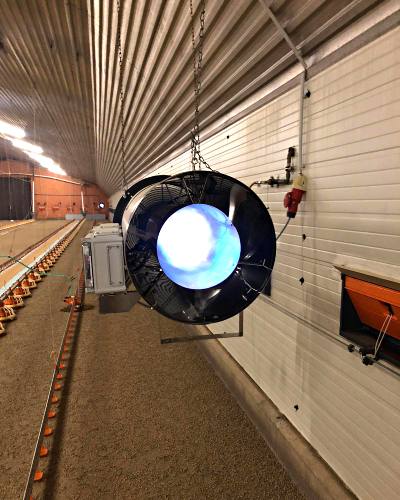
Figure 1: Hot air blower with direct combustion
When indirect fired heaters are used, the flue gases leave the building through a chimney. No harmful gases enter the barn, which significantly reduces the minimum ventilation rate. Retrofitting a barn with indirect fired heaters saves around 20 % of heating costs in the field. The same applies to hot-water heaters.
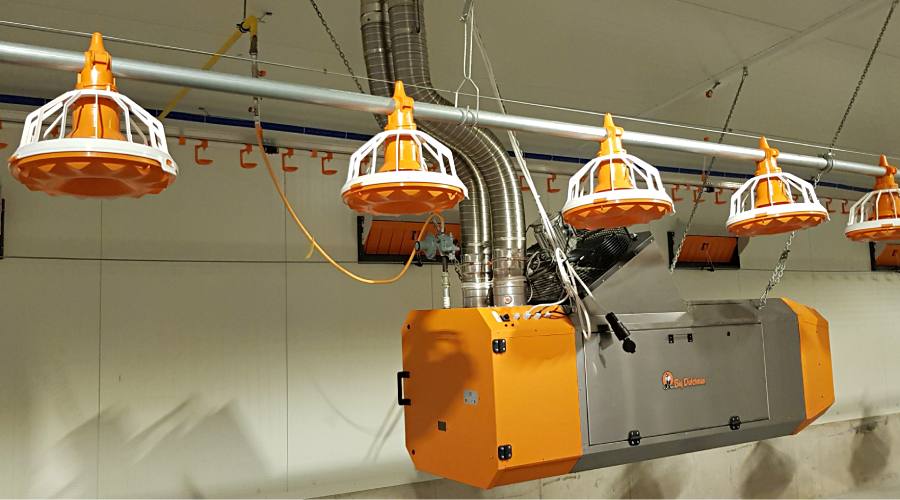
Figure 2: Gas heater with indirect combustion
Ventilation system
CO2 is heavier than air and builds up on the barn floor. At high concentrations, CO2 can displace oxygen. It must therefore be removed by a suitable ventilation system. In regions with a climate similar to Germany, side ventilation is the most convenient ventilation system. Fresh air enters the barn simultaneously and evenly along its entire length, with the air streams filling the entire interior. The ventilation system then extracts the water vapour produced by the birds and the carbon dioxide from the barn.
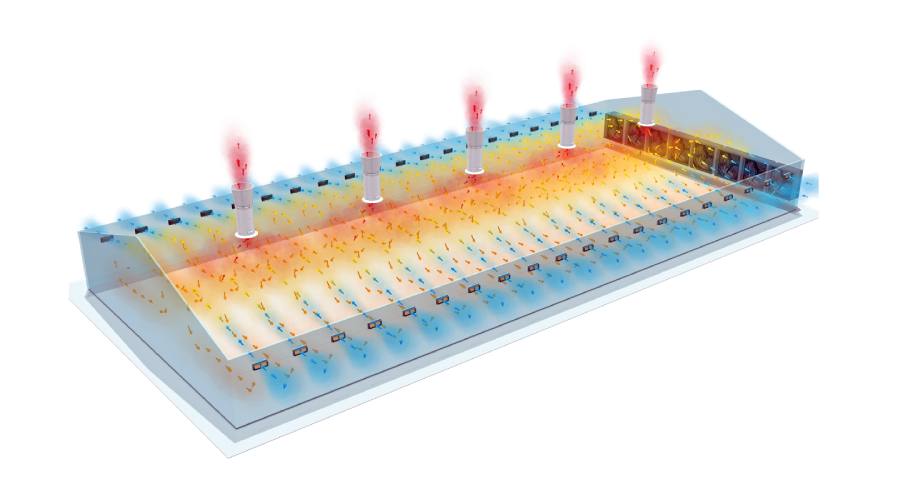
Figure 3: Side ventilation with wall inlets and exhaust air chimneys on the roof
Today, modern climate computers adjust the ventilation rate to a level that is ideal for the birds’ needs. These computers control the necessary ventilation demand based on temperature and humidity as well as the CO2 and NH3 concentrations. Additionally, different sensors are available to measure and monitor changes to the air quality: sensors form the basis of any computer-controlled climate system.
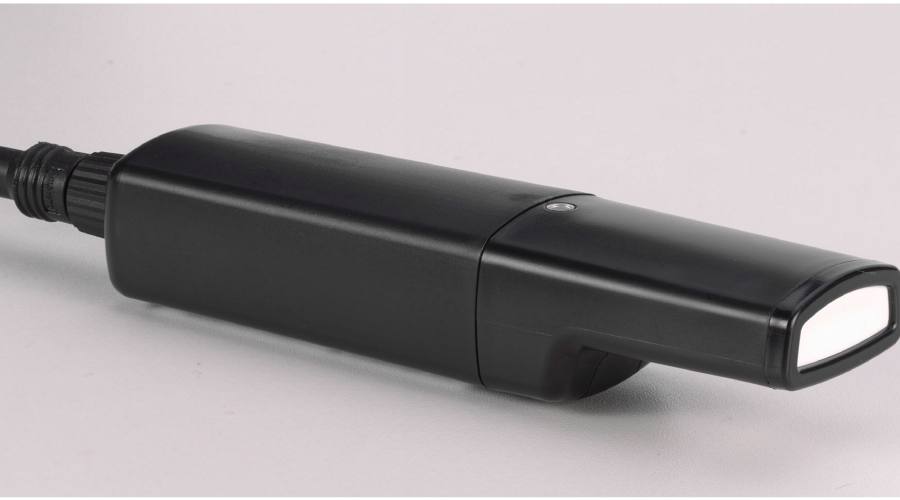
Figure 4: The CO2 sensor should be installed at bird level
CO2 increase causes climate change
In May 2020, the increasing greenhouse effect, which is caused by too much carbon dioxide in the atmosphere, led the German government to implement a carbon tax on fossil fuels. This carbon tax came into effect in January 2021.
Since then, providers of fossil fuels for heating, i.e. gas and electricity suppliers, have been taxed based on a certificate system. They pass on this carbon tax to their business or private end customers by adding surcharges to electricity and gas prices. The price for the emission of one metric ton of CO2 will increase gradually from currently €25 per ton to €55 per ton in 2025. It can be expected that the tax will rise further in the years to come.
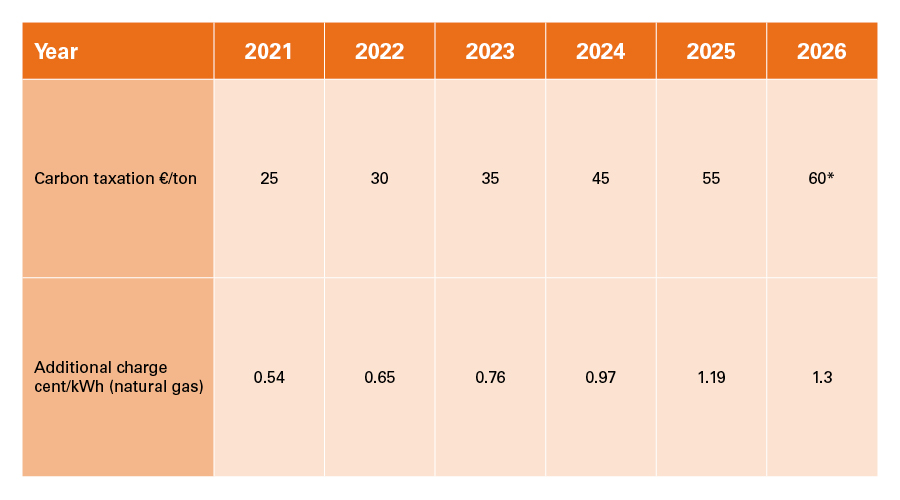
Table 1: Carbon tax per emitted ton in Germany | * No final decision yet
For a farmer with 42,000 birds who uses a direct fired heating system and who places great importance on dry litter even on wet and cold days, this can have the following consequences:
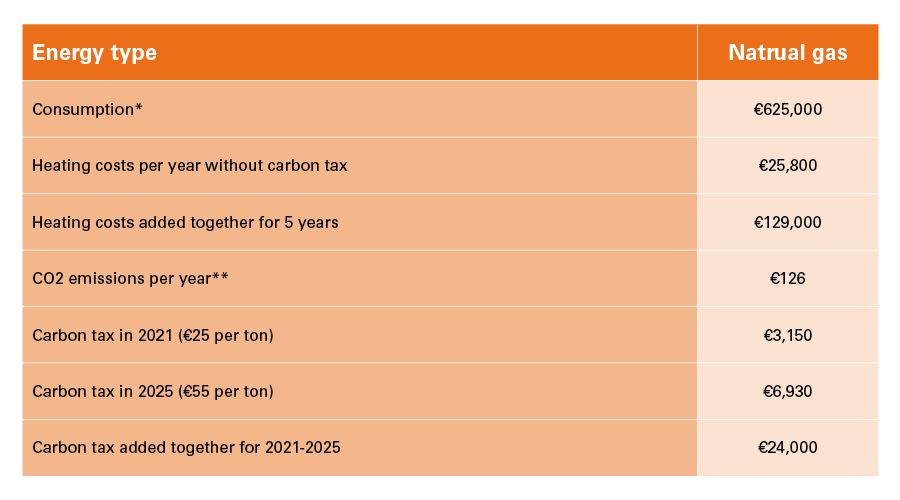
Table 2: Additional costs due to carbon tax | * Assumed energy rate for natural gas: 4.1 cent/kWh | ** 1 kWh of natural gas emits 0.202 kg of CO2
There are a number of established technologies that reduce the emission of CO2 and that amortise within a few years. In addition to the use of waste heat produced by biogas plants through hot-water heaters, the most important technology are heat exchangers.
Making use of savings potentials
As mentioned above, gas heaters with indirect combustion or hot-water heaters are a first step to reduce heating costs and thus the emission of CO2. Broiler producers can save around 20 % of heating costs with lower ventilation rates – especially for minimum ventilation. This leads to net savings of €5,200 per year. The carbon tax, added together for five years, is €6,000 lower.
Heat exchangers currently offer the greatest potential for saving heating costs. They recover the thermal energy from the barn’s exhaust air.
One example is the Earny 2 heat exchanger from Big Dutchman, a cross-flow heat exchanger. The warm air in the barn and the cold fresh air flow through an exchanger element at the same time, but do not mix. An integrated filter unit ensures that the exhaust air is cleaned before it enters the heat exchanger.
The result: Earny separates up to 99 % of dust. The warm fresh air flows in a circle and distributes throughout the entire barn, supported by multiple circulation fans.
A long-term practical test over eight batches carried out in Germany in 2015 resulted in savings of 44 %. The test compared two identical broiler houses with indirect fired heaters; one of the barns had no heat exchanger while the other one was equipped with Earny – and used 20,500 m3 less gas. The full article about the test is available on the Big Dutchman website: “A repayment of €9,000” (DGS magazine 49/2015).
In addition to an improved climate and reduced emissions of ammonia, odour and dust, this means that heating costs can be lowered by up to 60 %, depending on the heat exchanger model. The amortisation period is around four years; it can be significantly shorter for farmers who receive funds from the Federal Ministry of Food and Agriculture’s programme for the promotion of energy efficiency in agriculture.
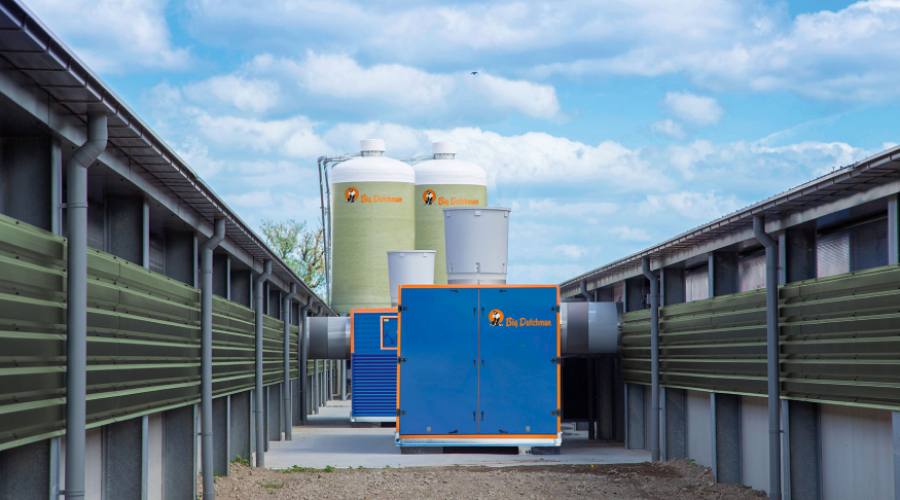
Figure 5: Earny 2 heat exchanger, certified by the German Agricultural Society (DLG)
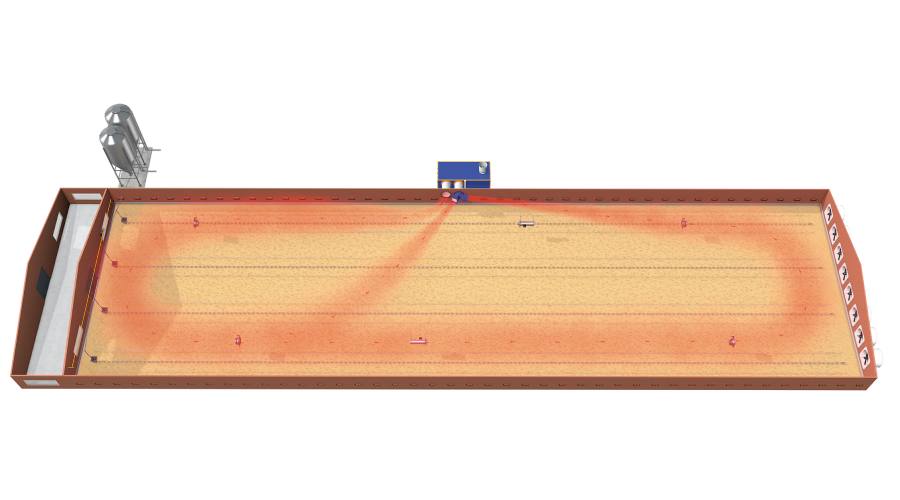
Figure 6: Air distribution in the barn when using a heat exchanger
Table 3 shows the great potential: When a barn is retrofitted with indirect fired heaters and a heat exchanger, farmers can save up to €84,500 of the total costs. Additionally, they contribute to climate protection because their barns emit 70 tons less CO2 into the environment.
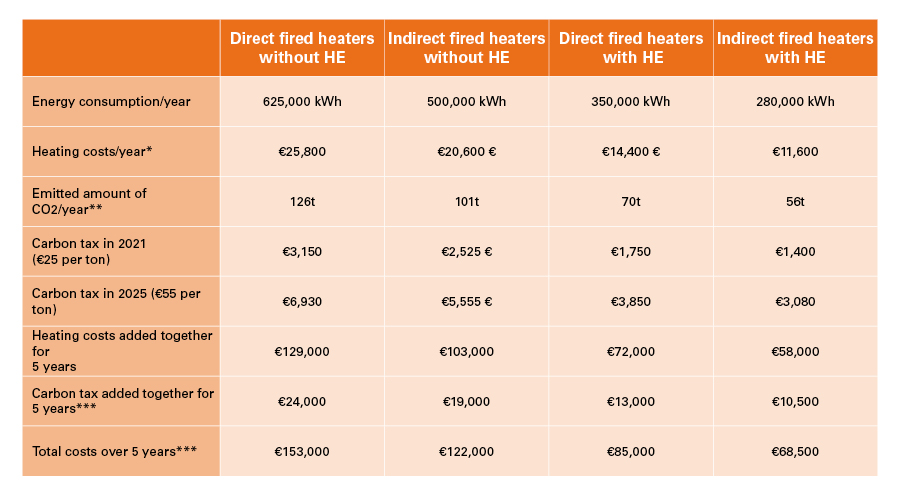
Table 3: Heating cost comparison when using an indirect fired heating system and a heat exchanger (HE) in a German broiler house with 42,000 birds
* Assumed energy rate for natural gas: 4.1 cent/kWh | ** 1 kWh of natural gas emits 0.202 kg of CO2 | *** Rounded
Conclusion:
- Investing into energy-saving technologies has four benefits:
- healthier birds and better production results due to an improved house climate;
- reduced CO2 emissions due to heating energy savings;
- significantly lower heating costs due to a modernised heating system and the use of a heat exchanger and
- contribution to climate protection.
*1 ppm = parts per million. 1,000 ppm of CO2 correspond to 1 volume part per thousand (vol‰) or 0.1 volume percent (vol%) or 1.83 g of CO2 per cubic metre (at 1013 mbar and 20 °C).

